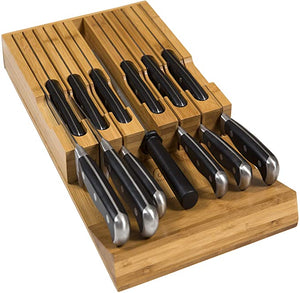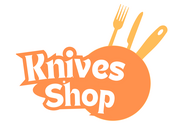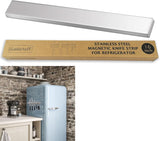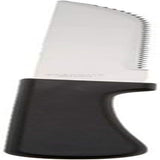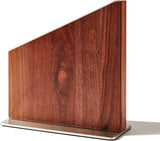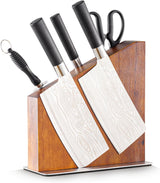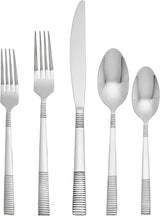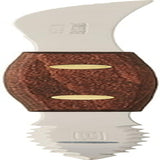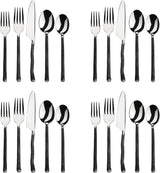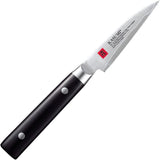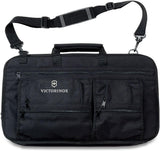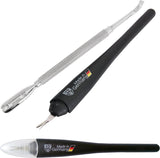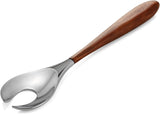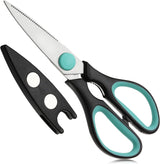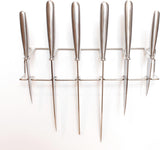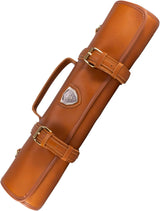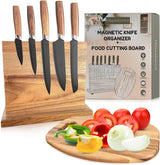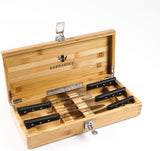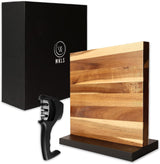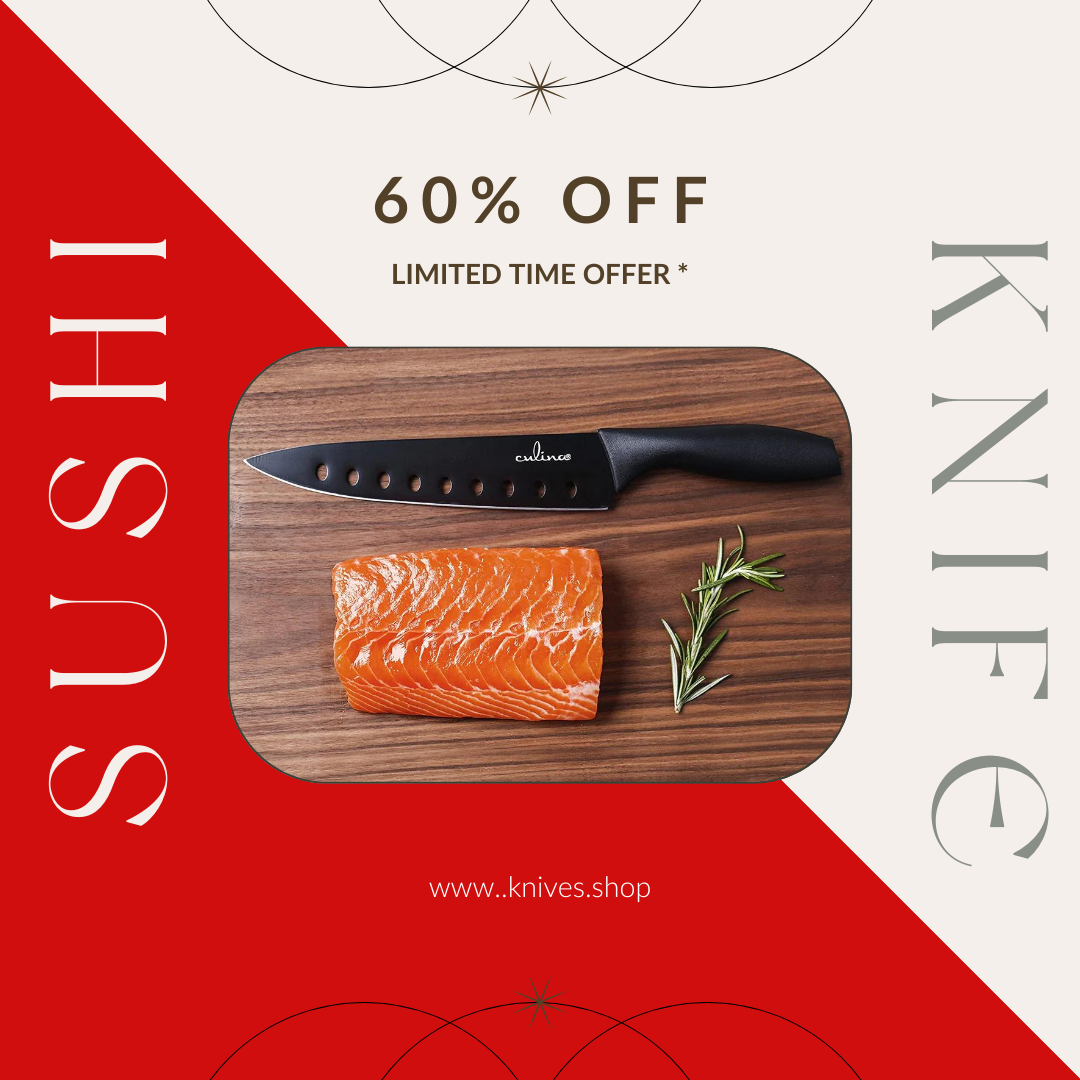When you start preparing practically any recipe, the first thing you do is start cutting things up. As a result, it's something you do frequently in the kitchen. Cooks often believe it is one of the abilities that slow them down and prevents 30-minute recipes from being 30-minute dishes. So, even if you've done a lot of chopping, are you as productive as you could be?
Is the size and shape of the items you cut uniform? It's sometimes the difference between a good dish and a great one whether it's cooked consistently, which means your ingredients should be cut evenly and uniformly. Are you able to cut items quickly and evenly? That is what you will study and practice today.
What Knives Will I Require?
A basic sharp chef's knife is the most important knife in the kitchen for cooking. The huge knife shown above is this one. Typically, the blade is six to ten inches long (eight inches is standard). There is no one-size-fits-all chef's knife; you should have your knives sharp.
The majority of your cutting will be done with a chef's knife, and you won't need much else. There are two more, though, that are critical:
Paring Knife: Close-up labor, such as cutting eyes out of potatoes, peeling vegetables, segmenting citrus fruit, or deveining shrimp, is made much easier with this tool.
Serrated Knife: This is handy not just for cutting bread but also for fragile vegetable peel, such as tomatoes, where a chef's knife is often preferable.
Things to follow before you start chopping
Before we get into the fancy showy knife skills, there's one thing you need to know in order to cut with assurance.
- Make your cutting boards more stable: Your cutting boards should be solid and placed on a flat surface at a comfortable height. This means you shouldn't be able to slide the board around with your hand on it. There are various simple ways to add non-slip feet or a rubberized bottom to your cutting board if it doesn't already have them. To avoid your board from sliding around, place a wet cloth or paper towel under it. Always chop on a stable surface.
- Always use Sharp knives: Once you've established a sturdy working platform, ensure sure your knife is razor-sharp. If you acquired your knife recently, it's probably sharp enough. If, like most people, you've had it for years and have never sharpened it, now is the time to do so. A dull knife can be quite hazardous. Dull knives take more force to cut through food and are more likely to slip, increasing the risk of injury. Plus, they're not going to do as good of a job.
How to hold your Knife properly?
Now that you've got a good knife and a good cutting surface! You can finally pick up your knife now! Your grip is crucial when it comes to using a knife quickly, accurately, and safely. While cutting, you want the knife to feel entirely under your control. You don't want it to slide about (especially if your hands are greasy), and your fingers shouldn't get in the way.
Wrong Method
- Hold the handle close to the blade but not too close. It's difficult to have any control over where the blade is cutting when it's that far away from the hand.
- Do not grasp the knife. It's all too easy for a finger on the spine to slip or get in the way — or even under the blade. And, once again, you have less control over where the knife goes.
Right Method
Wrap your hands around the bolster and curl your other fingers around the handle, pinching the blade with your thumb and forefinger. Take your knife and hold it in this position. Consider how simple it is to pick where to place the blade on an ingredient. This gives you the most control and power. Holding your knife correctly and squeezing the blade in this manner will revolutionize your chopping speed and confidence!

How to Hold the Food You're Preparing to Cut
The most key fact to remember when cutting food is to keep your fingers out of the way and the blade starting to move evenly through the food. The best way to do this is to use a "claw grip" on the food, keeping the middle of the knife close to your knuckles as a reference, and rocking the blade over the food. This provides the greatest precision and control. Take note of how the fingers are slightly curled in. This way, the knuckles can act as a guide for the knife blade, allowing you to slice food safely without risking cutting your fingers.
If you're not used to using this method, it may feel strange at first, but it's far safer and well worth it.
Chopping
It's no surprise that some individuals despite cooking: if cutting carrots takes an eternity, preparing a full meal is a chore. That's why learning to use a knife effectively is so beneficial. Chopping is your best ally in this endeavor. Unlike professional chefs, who dice their food into precise cubes, home cooks can typically get away with it as long as the pieces are roughly the same size.
Chopping Garlic
Set the unpeeled garlic clove on a chopping board and place the blade of your Sharp chef's knife flat against its side, parallel to your chopping surface, to chop it. Make sure you use a very sharp knife and smack the knife blade against the clove with a quick motion, being careful not to hit the blade's edge. Remove the skin from each clove you need for your recipe and repeat the process. Remove and discard the root ends. Then grab a clove and place it on the cutting board firmly. From the root to the tip, slice thickly. To chop, stack the garlic cloves, hold them together, and chop.
Chop Parsley
To chop green herbs like parsley, use a chef's knife. Begin with clean, dried herbs that still have their stems attached. Hold the leaves in a clump above your cutting surface and trim the leaves into a pile with your knife at a 45-degree angle. (Remove the stems.) Grab all of the leaves in your palm and, using the "claw" grip, rock the leaves under your knife to chop them. Gather all of the chopped herbs in a pile, turn it 90 °, and cut them again for a rough chop. Repeat the technique twice more for a medium chop. Repeat it 3 to 4 times more for mincing.

Dice
Dicing, which is more precise than chopping, is the process of turning uneven and lumpy vegetables and fruits into small, clean cubes that cook evenly. Chefs compress curves and lumps into cubic shapes whether preparing a large potato or a small carrot.

When you cut that cube along horizontal and vertical lines, you get neat dice. To get small dice, you can use a thin blade.
Dicing an Onion
To dice an onion, cut it up from the stem tip to the bottom root with a chef's knife. Leave the root intact when peeling. Place the half on a Cutting board, flat side down, and place your fingertips or palm on top. With your other hand, cut horizontal slices approximately 14 inches thick from the stem to the root end, stopping about half an inch before slicing through the root. Then, with your assisting hand, grasp the onion, curling your fingertips under it to mimic a claw; this protects your knuckles and fingertips. Starting at the stem and proceeding toward the root, make 14-inch downward slices with your cutting hand.
Dicing a Potato
Start with a clean, peeled potato while dicing it. Trim the rounded edges of the potato with your chef's knife, creating a six-sided rectangle. Cut the potato lengthwise into equal halves, then flip the pieces over on their sides to make a huge dice. Cut each piece into equal-sized rectangles. Cut your rectangle into three lengthwise parts, then cut each piece in half lengthwise for a medium dice. After that, cut the pieces into equal-sized dice. Repeat the technique for little dice, but make smaller cuts.
Tips for Developing Good Knifing Skills
Finger Placement
A dull knife is something that no chef wants. You must sharpen your blade if you want a sharp knife. When honing a knife, keep your thumb under the steel sharpener's protection. Never touch the blade with your fingertips. Keep an eye on the knife blade and where the blade's edge is at all times. When slicing, remember the three-finger rule: front one (the middle) and two back (your index finger and ring finger).

Start by chopping easy vegetables
Practice your knife abilities by mastering the classic French vegetable knife cuts, starting with light vegetables like zucchini and working your way up to harder vegetables like carrots. You'll be an expert in no time dicing a butternut squash, which is one of the hardest veggies to dice. Slowly become acquainted with additional cuts, such as large dice, little dice, julienne, and others.
What Does It Take to Be a Professional?
Any cooking talent takes a long time to acquire, but knife skills are particularly reliant on muscle memory. Professional cooks with years of experience can benefit from the practice. Although it isn't practicable to do this every night, try to take a few moments to slow down, concentrate on the technique, and make the cuts as even and uniform as possible.
